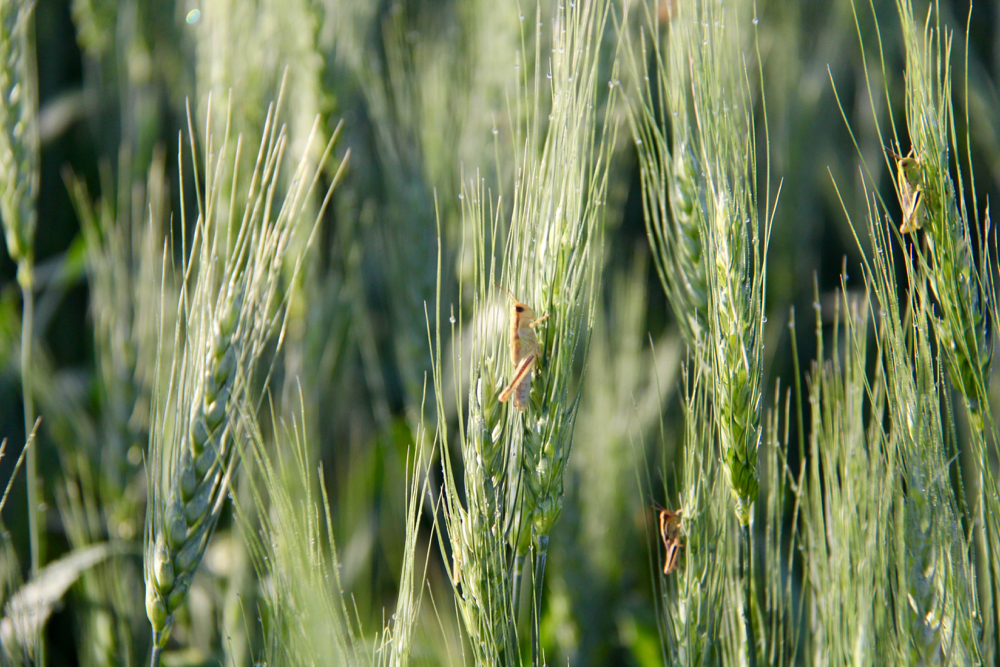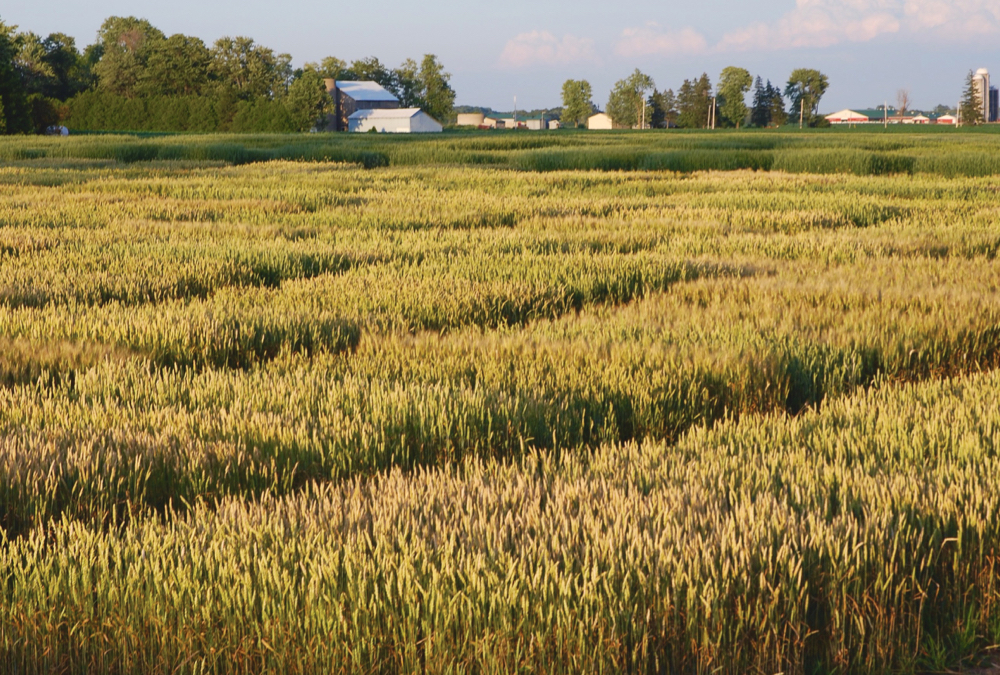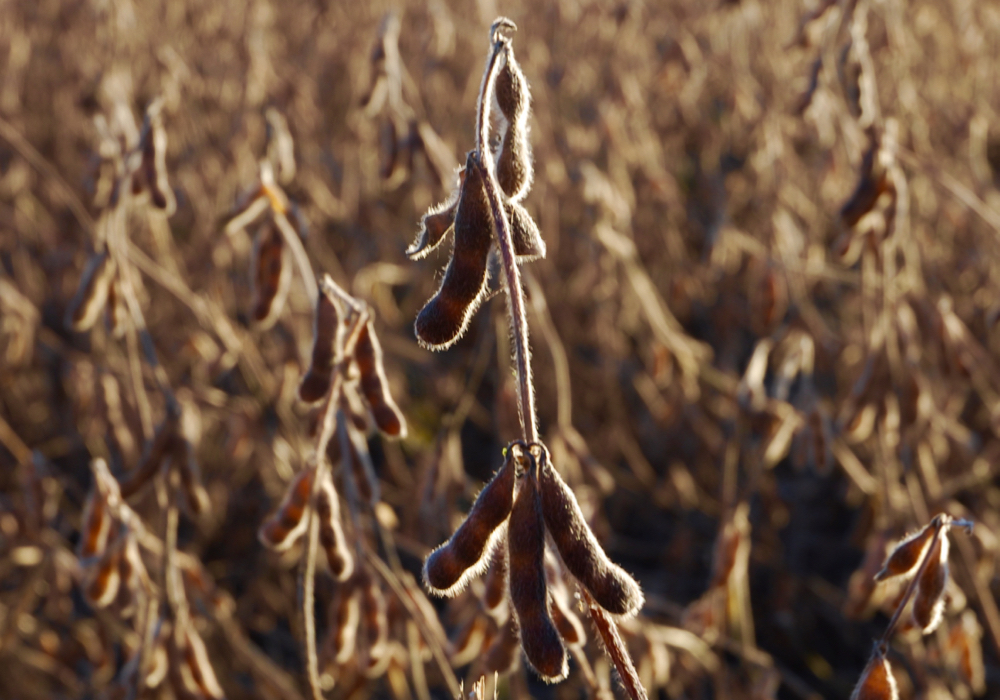When the word “biotech” first leapt onto the agri-food scene, there were plenty of proponents and opponents for the science of implanting different genes into corns, soybean and canola genetics. The first Bt hybrids offered yield advantages, and the early days of glyphosate-tolerant soybeans saw cost savings that began with weed management practices but also led to the wider adoption of no till.
The optimism surrounding those first innovations was undeniable and, among other things, prompted the “Five Phases of Biotechnology,” a short bare-bones road map to the anticipated stages of developments within the sector. From the herbicide and pest resistance that marked Phase I to the bioenergy processes predicted — and realized — in Phase V, biotechnology was going to revolutionize agriculture.
Read Also

Agronomists share tips for evaluating new crop products and tech: Pt. 3
With new products, new production practices and new technology converging on the agriculture industry at a frenetic pace in recent…
Now, two decades after those first traited plants began appearing in fields in North America, we are beginning to see a new opportunity, based on microbes, which could rapidly eclipse many of our current limitations.
It’s still early in the game for microbials (part of what are often called “biologicals”) but the benefits and advantages for modern agriculture are already enticing.
The U.S. Environmental Protection Agency (EPA) has adopted a straightforward definition: “Microbial innovation is a micro-organism (bacterium, fungus, virus or protozoan) that can be used for controlling pests or enhancing plants. It’s a living micro-organism and the substances produced by the micro-organisms.”
The microbe can be modified to produce more cells or compounds, but only by finding alternative food sources and using natural selection. That compares to plant biotech which involves the manipulation of a plant’s genes or inserting new genes into a plant.
Dr. Tyler Whale, president of Ontario Agri-Food Technologies (OAFT), based in Guelph, adds to the USDA definition, noting that for Canadian regulators, a symbiotic or mutually beneficial relationship must be part of the innovation, and that it must contain the unaltered whole organism(s).
It’s why Bt corn (based as it is on the insertion of a gene or genetic derivative) cannot be classed as a microbial: the Bt gene insertion is a single-site occurrence — there’s no symbiosis or relationship with or within the host plant.
“The funny thing about microbial biotech is that it’s happening right now, and it’s been happening since the dawn of agriculture and the dawn of life,” says Whale. “Single-celled organisms, mic-robes, fungi, bacteria and viruses (to some extent) are interacting with more complex organisms and finding symbiotic relationships where a microbe can survive by improving a host’s chances of surviving.”
Where microbial biotech is really getting started, Whale says, is in understanding the complexities within those microbial ecosystems, and then learning to manipulate and promote their symbiotic relationships.
As an example, Whale points to an emerging and improved understanding of mycorrhizal fungi. Farmers, agronomists and researchers are learning more about this microbial ecosystem, including the effects on soil quality, crop rotation and tillage, and the use of pesticides and agricultural inputs. The potential impact from enhancing just those particular aspects is incredible, to say the least.
Vast potential
Yet those more-obvious components of production agriculture are just the beginning. According to Dr. Pam Marrone, chief executive officer and founder of Marrone Bio Innovations, based in Davis, California, current sales for microbial innovations are somewhere between $3.6 billion and $4.6 billion, with double-digit growth rates.
Biopesticides that are now available are generating roughly $2.0 billion to $3.0 billion, which is admittedly a tiny fraction of the $55 billion to $60 billion for chemical pesticides. But the chemical sector’s sales are growing at single-digit rates while the biopesticide market for registered, regulated products is leaping ahead by 15 to 16 per cent per year.
“Then there’s another category of plant stimulants — or biostimulants,” says Marrone, who participated in a panel discussion called A New Paradigm for Biotech in Ag last January in St. Louis, Missouri. “These could be microbes or nature-identical substances. They do not control a pest or do not cause a physiological response in a plant — they only enhance the growth of the plant, and as such, they do not require registration from the PMRA or the EPA. That segment is worth another $1.6 billion in current sales, and they’re also growing in double digits, just not as quickly as the biopesticide category.”
The benefits of such naturally based or naturally occurring products quickly become obvious, even beyond the farm. A consumer base that’s becoming more vocal about so-called “unnatural” genetic manipulations in Bt corn might be more receptive to a symbiotic interplant relationship along with the natural substances produced by these microbes. That could translate into more support for farmers and what they do.
Yet as much as there are positives in the development of microbial biotech, there is some disparity in its development too, and that’s in the difference between U.S. and Canadian regulatory authorities.
Marrone isn’t betraying any secrets when she echoes a familiar refrain about scientific research and development in Canada: dealing with the PMRA has its challenges in part because it demands efficacy data gathered in this country. For better or worse, the U.S. EPA is more concerned with quality control, physical-chemical properties, and ensuring there are no human pathogens present. Some efficacy data is required, but the U.S. focuses on health and safety and less on performance, and as is known on both sides of the border, that speeds the approval process considerably.
There is a joint-review provision that does exist for biopesticides, adds Marrone, but she notes that most American biopesticide companies opt out of that process because they understand the PMRA’s involvement is likely to slow things down.
Whale agrees that there is the need to ensure Canadian development doesn’t force the industry into unnecessary delays getting products to the field. It’s one thing to have a reputation for regulatory scrutiny and thoroughness, but you can’t delay things at the expense of adopting technology late,” Whale says. “The costs of ‘late-to-the-party’ are higher than ever, and we have to find where we fit but we can’t delay — for our farmers’ sake or for our own food-sovereignty sake.
Benefits — to the grower
Regulatory delay aside, microbial biotech stands to rewrite the story for biotech as a science and biologicals as an industry. It takes 10 years and $250 million to bring a new chemical pesticide to market. For a plant-biotech innovation, that can be 12 to 13 years and $130 million.
Yet for microbes, the process can be faster and cheaper — perhaps too fast, in a way.
“Since biologicals can come to market within three to five years of development with only $3.0 million to $5.0 million invested, you’re still in the early stages of the commercial adoption of your product when you launch it,” Marrone explains. That sounds like an advantage but it also means there hasn’t been the time to develop the same stream of data and information as from a lengthier R&D term.
Adds Marrone, “You don’t have 10 years, just three, so you’re still doing the development of your product when you’re in the market. So that’s great for early adopters, but it’ll take longer to reach the mainstream grower because you don’t have the same amount of data and experience behind the product.”
It’s also a different business model than chemicals. That means a slower adoption of these technologies, although Marrone believes lengthening the development of some of these products and even $20 million or $30 million in R&D would speed their uptake, although many small companies may not be able to afford this extra wait-time and money before getting into the market.
Working in co-operation
Despite the speed and lower relative costs with which these products are brought to market, Marrone shares something she told the panel discussion in St. Louis earlier this year: microbial biotech will not replace current plant biotech applications. She refers to Monsanto’s alliance with Novozymes in the development of a combination of a traited corn hybrid, plus a microbe from Novozymes on top of that, placed on the seed, with a chemical application added to that combination.
“So they’ll have all three technologies integrated into one… I don’t see microbials replacing plant biotech — they’ll be used in conjunction,” says Marrone.
That collaborative approach, Marrone adds, will do more to extend the life of existing plant biotech applications.
Unlike Bt corn or glyphosate-tolerant soybeans, resistance with microbes and microbial ecosystems is not believed to be an issue.
One of Marrone Bio Innovations’ products, Grandevo, is a new species of bacteria that produces four different com–pounds that work in four different ways. That diversity if important because if it had only one chemical in its make-up, it would be easier to develop natural resistance.
At the same time, many of these microbial ecosystems are also biodegradable, so they don’t exist long enough for resistance to develop.
Whale agrees that the key to fighting the development of resistance comes from the symbiotic relationship between microbes and plants, where that “living organism” (which can produce multiple natural compounds) distinction creates an evolutionary resilience. In a Bt hybrid, for instance, the implantation of the Bacillus thuringiensis bacterium is a mode of action with a single-site application, so pests such as European corn borer can develop resistance more easily and readily. With microbial applications, since they require that ecosystem approach, they’re better suited to evolve and adapt according to the actions of a pest or disease pathogen.
In essence, two — or multiple — modes of “living” action are better than one.
A new ‘S’ word
As unique as microbial biotech may be, however, some of the same old issues facing plant biotech applications are undoubtedly going to surface. In spite of what transgenic discovery has done for agriculture — and society as a whole —there has been growing opposition to “GMOs” from the non-farming, consumer base.
That opposition, while not gaining much ground in North America due to the recent responses of members of the scientific community, is still grabbing media attention. It’s to the point where the issue of “sustainability” has been eclipsed in consumers’ ranking by “social licence,” i.e. a permission from consumers that allows the farmers to produce.
Farmers, producer groups, governments and all of agriculture’s stakeholders need to be better at appealing to the public as to what they do proactively to help the environment or to be more sustainable in their practices. But technologies like biotech can encourage or discourage the public’s confidence in agriculture, and their willingness to extend that social licence to producers.
That’s why it’s important that there’s been more research and information generated on farm management practices, such as mychorrizal fungi and their impact on soil health, leading to healthier crops and higher productivity.
Combining these kinds of information with information on other biotech benefits could potentially turn opposition into support.
“Farmers are science based, for the most part. They’re evidence-based people,” says Whale. “They make their decisions based on return on investment and demonstrations of a technology. They’re not ones to accept huge risks. They already accept huge risks by dealing with Mother Nature and by dealing with high capital costs. So for a technology like this to be accepted, certainly it has to be proven to them, and proven to them in their soil type and the crop type and the genetics that they use. But suppose a technology can attract early adopters and shows wonderful results: from this you’ll gain more security and knowledge and experience.”
From that point, the social licence issue would take over. Yet Whale is frustrated with the fact that there are those who would rather see the world’s citrus industry decimated by huanglongbing (greening disease) than allow a GMO solution that stakeholders and growers are hesitant to use for fear of consumer backlash.
Meanwhile, there are the positive examples of biotechnology (GMO) that can deliver amazing results, including Golden Rice and the saving of the Hawaiian papaya industry from papaya ringspot virus (PRV). Both of those examples have been created for non-profit purposes.
The challenge remains how to find that median between being productive enough to feed the world while allaying the fears of a consuming public that’s largely out of touch with modern farming practices and the realities of the global marketplace.
It could be that microbial biotech is the opporunity that plant biotech can use to create balance in the agri-food industry.
This article first appeared in the October 2015 issue of the Soybean Guide
















